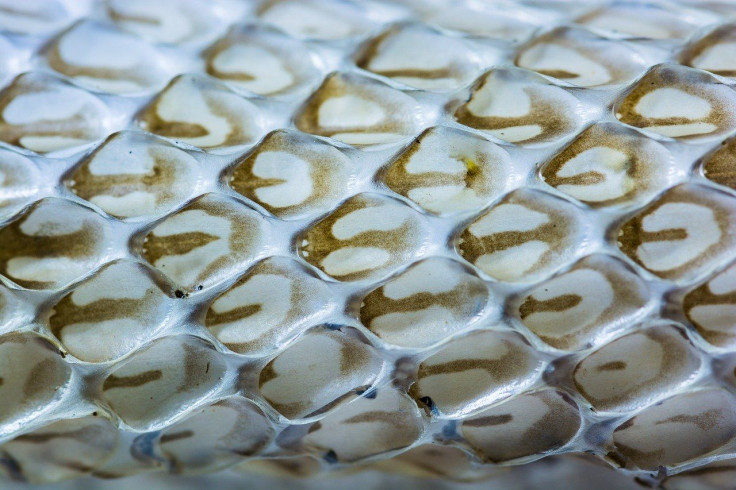Rare Iridescent Snake Discovered In Vietnam, Scales Shift Through Blues And Greens
KEY POINTS
- A team of U.S. and Vietnamese scientists discovered a new species of odd-scaled burrowing snakes in northern Vietnam
- The snake, named Achalinus zugorum, has dark and iridescent scales that shift through blues and greens in the light
- The snake spends most of its life beneath the surface and lacks bright-light photoreceptors in its eyes
A rare iridescent snake with scales that shift from green to blue has been discovered in Vietnam.
A team of scientists from the Smithsonian National Museum of Natural History and the Vietnam Academy of Science and Technology discovered the new species of snake last year while researching biodiversity in a heavily forested part of northern Vietnam.
While heading toward a survey site, the scientists had stumbled upon a peculiar-looking snake whose dark iridescent scales were small, ridged and oddly patterned, shifting almost like a hologram from electric blue to acid green when light hits it.
"That was a really exciting moment," said Aryeh Miller, one of the researchers and a fellow at the Smithsonian's National Museum of Natural History, in a blog post on the Smithsonian’s website.
"The specimen looks very different. So different, in fact, that we didn't know immediately what it was," added Miller.
The scientists published their findings Monday in the journal Copeia.
The elusive snake had been found in Vietnam's northern Ha Giang province. Scientists were able to identify it through some clues in the reptile's appearance.
The snake lacked bright-light photoreceptors in its eyes, which means it usually stays underground or beneath leaves. These types of snakes are especially hard to find since they spent most of their lives beneath the surface, CNN reported.
"In 22 years of surveying reptiles in Vietnam, I have collected only six odd-scaled snakes," said Truong Nguyen, vice director of the Institute for Ecology and Biological Resources at the Vietnam Academy of Science and Technology, in the blog post. "This is one of the most poorly studied groups of reptiles."
The scientists later identified the iridescent snake as a member of the rare genus Achalinus. The reptiles in this genus are also called "odd-scaled snakes" due to their scales, which are spread out instead of overlapping with each other. Until the snake's discovery, there were only 13 known species within the genus, six of which are from Vietnam.
The newly discovered snake has been named Achalinus zugorum in honor of the Smithsonian's retired curator of reptiles and amphibians, George Zug, and his wife, Patricia Zug, according to the Smithsonian magazine.
Researchers, which sampled and sequenced the reptile's DNA in the Smithsonian, will be returning the snake to Vietnam soon.

© Copyright IBTimes 2025. All rights reserved.





















